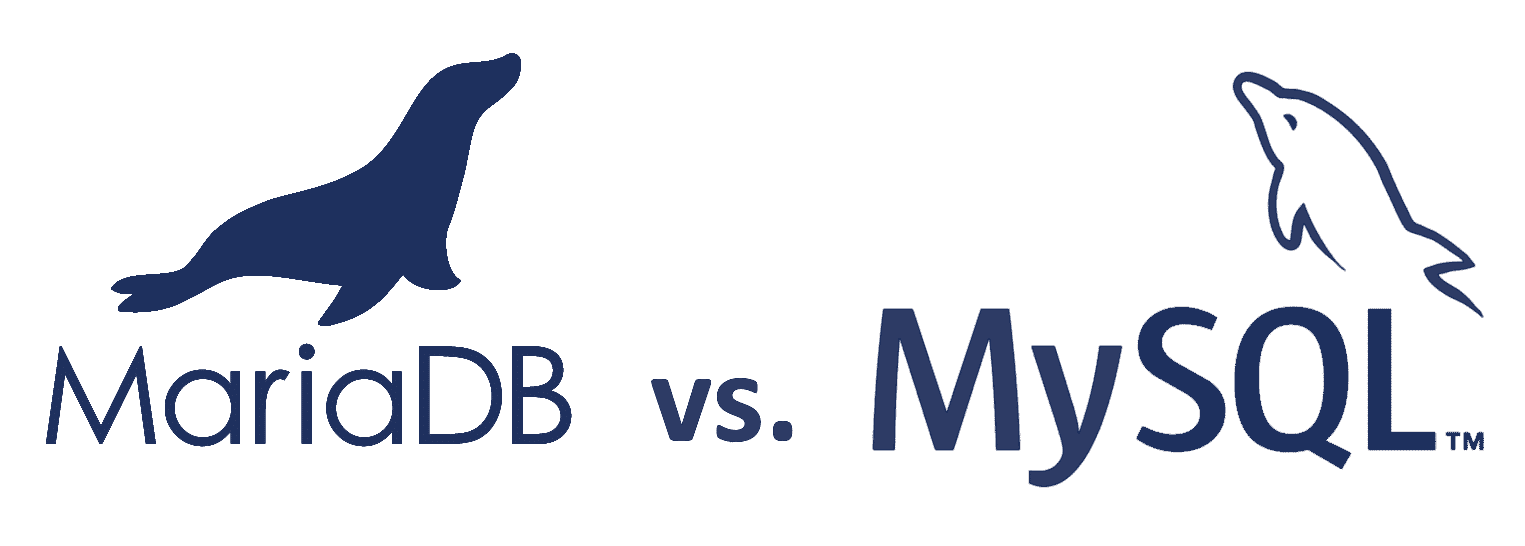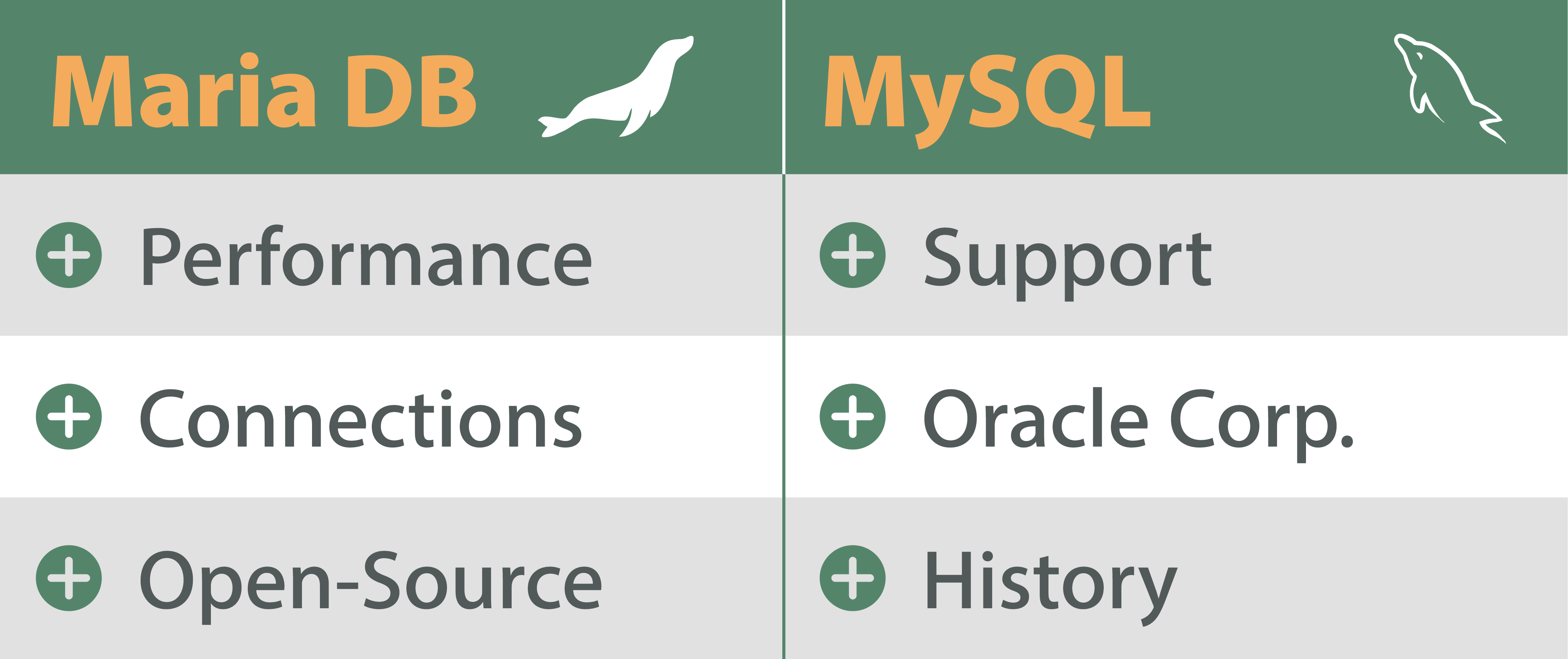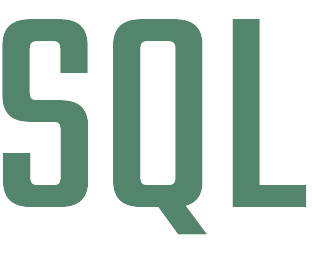An analysis of the two popular database technologies
MariaDB or MySQL are just two of many possible database types. Both databases are very popular in practice, which often leads to users weighing up which database might be better suited for their use case. This raises the question: Is MariaDB actually the better MySQL for many? We show you which database solution is the right one for your company.
Read in our article general information on databases and the most important differences between Maria DB and MySQL, divided into the areas of open source, market presence, performance and pricing. At the end of the article you will find a practical example of how easy the database connection works with the OPC Router.

1. General information on databases
The MariaDB and MySQL database management systems have a lot in common, which can make it difficult to choose when you need to decide on a database solution for your business. Both systems are fundamentally open source, relational databases. MariaDB is originally a spin-off or further development of the MySQL project, which is now fully managed by Oracle. Because Oracle holds the trademark rights to the name MySQL as of 2010, a new name for this database project was found in MariaDB.
Development
The founder of the MariaDB project is Michael Widenius, who was also the chief developer and inventor of MySQL in 1994 and co-founder of the Swedish company MySQL AB. This company was taken over by SUN Microsystems in 2008 and then by Oracle in 2010. However, the further development and support of the open source idea at MySQL came to a standstill with this takeover and so Widenius turned away from MySQL and began to develop MariaDB, the second important relational database management system.
In December 2012, an independent software foundation, the MariaDB Foundation, was founded to ensure that MariaDB in the Community Edition remains available as open source and is promoted and further developed in the future. But MariaDB, like MySQL, also has an Enterprise Edition, which can be licensed separately and is then subject to a fee with support and further functionalities.
Compatibility
The database structures of MariaDB and MySQL are so similar, certainly because of the same development team, that one can even speak of a 1:1 compatibility. Both databases use the same SQL syntax, which requires similar indexing. It is therefore relatively easy for companies to switch between the two databases. This is an absolutely unique feature compared to other database solutions.
Below we explain some of the main differences between MariaDB and MySQL so that you can decide which database solution can be the right tool for your company.
We support you in selecting the right database and integrating it into your systems. Contact us with your request.
2. Differences
Open source
The central distinguishing feature between MySQL and MariaDB is the way the open source idea is interpreted. For example, the development and update cycles for the free open source community edition are significantly shorter for MariaDB than for MySQL.
MySQL offers a free open source community edition. However, if you need enterprise-level features, MySQL locks some of those features behind proprietary code. So for the full version of MySQL, companies must purchase an Enterprise Edition.
MariaDB offers all of its features in its open source package. Users can still pay for support services or for cloud implementations (enterprise licence), but a qualified team can use the best and core features of MariaDB completely free of charge.
Apart from how these two products handle their open source code base, MySQL and MariaDB also have other different salient features.
Market presence
One of MySQL’s biggest advantages is its long market presence. Because it is one of the oldest popular database solutions, there is a wide range of community resources that developers and database administrators can use to find answers to problem questions and fix bugs. Even if they don’t pay for MySQL support services, MySQL is a database solution that many database administrators are already familiar with. So it can be easier to learn and implement if you already have a database team.
Performance
The biggest feature and therefore the biggest advantage of MariaDB is its speed and performance. When it comes to performing queries or replication, MariaDB is faster than MySQL. So if you need a high-performance relational database solution, MariaDB is a good choice. In addition, MariaDB also easily supports a high concurrent number of connections without much performance degradation. So if you have many data sources, this could be another reason to prefer MariaDB over MySQL.
Pricing
When it comes to pricing, it’s worth noting that it’s possible to use MySQL and MariaDB for free by using their open source versions. But if you are looking for a bit more support or special implementations or features, both offer some additional services. MySQL offers an enterprise version of its product that includes complementary security features and 24/7 support.
Maria DB offers a paid enterprise edition as well as a cloud implementation of its database solutions on an hourly billing basis. This solution includes support, implementation as well as security features and custom branding.
All in all, it’s a tough call between Maria DB and MySQL, as both are extremely powerful relational database solutions that can be used for many similar use cases.
Below, we summarise the most important distinguishing features.
3. Summary
If you need high performance and a variety of connectors from your database solution, then MariaDB is the solution you should prefer. A free tool can also be used to build enterprise-level databases, as you can access these enterprise features in the open source code.
MySQL may be the better choice if you need a wider range of support resources or if you already have a team of database administrators who are familiar with MySQL technology. But most professionals also need only a few minutes to get used to MariaDB before they can fully work efficiently with the database management system. Administration and operation are almost completely the same for both databases.

4. Conclusion
This article gives a first analysis of the two popular database technologies on the market today: MariaDB and MySQL. Overall, the decision for MySQL or MariaDB depends on the company’s resources and its business goals.
MySQL is a great technology to work with safely and reliably because it has been on the market for well over 25 years and because there is a huge team behind it with Oracle Corporation, especially for the paid services. If performance and efficiency are a main requirement, then MariaDB might be the better alternative because it is a lightweight version of MySQL and offers more features in addition to better performance.
Is MariaDB really the better MySQL for many? Even if this question cannot be answered conclusively, the fact that many leading IT companies such as Google, Wikimedia, redhat, ubuntu, Mozilla, Suse or even XAMPP (Apache) have opted for MariaDB is certainly a clear indication.
Simple database connection in practice
The use of a database has become established in production and in Industry 4.0 and it is no longer possible to imagine life without it. The management of large amounts of data and multiple users at the same time are just a few advantages of a database connection.
In the practical environment, many different application possibilities can be realized. For example, OPC UA data from a machine can be easily written to SQL databases such as MySQL or MariaDB via software such as the OPC Router. With the OPC Router, several processes can be triggered simultaneously from one database. In this way, ERP systems such as SAP or Web Services can access the database and obtain important data for production, logistics or other internal company departments. In addition, this information can be uploaded simultaneously to a cloud such as Azure, Siemens or AWS, so that access is possible from all locations in the world.
Further information
In our article “What is MongoDB?” we explain the NoSQL database and show the differences to relational databases. Learn how MongoDB differs fundamentally from conventional databases such as Oracle, MySQL or the Microsoft SQL Server.
The InfluxDB database was developed to collect large amounts of data. Read how to set up the OPC Router with its InfluxDB Plug-in to transfer this data directly to InfluxDB 2 and thus make the data available for BigData and analysis applications.
SQL, or Structured Query Language, is a standardized language that was specially developed for managing and processing data in relational databases. Read everything you need to know about SQL in our article.
PostgreSQL is a highly flexible and powerful open source database that offers a wide range of functions. Our article about PostgreSQL tells you everything you need to know.
Further interesting articles on the topics of Industry 4.0, cloud, technology, alerting and practical application examples as well as case studies can be found in our Knowledge Base.




